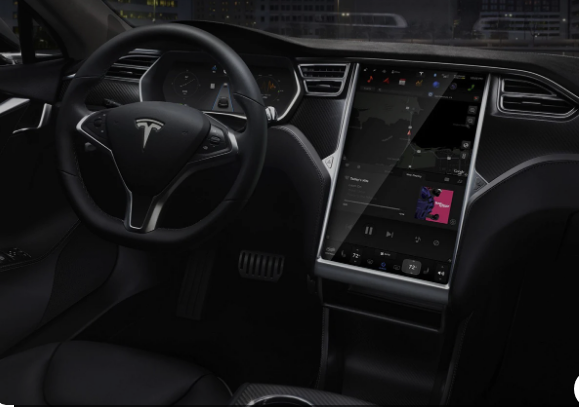Introduction to Blogging Redefined
In the dynamic world of digital content, blogging has undergone a radical transformation. What began as simple online journals has evolved into sophisticated content marketing powerhouses that drive engagement, authority, and revenue. The redefined modern blog is a multifaceted platform that combines compelling content with strategic design, technical optimization, and audience targeting. Today’s successful bloggers must navigate an increasingly complex landscape where content quality, technical performance, and user experience intersect to create impactful online presence.
The evolution of blogging has been nothing short of remarkable. From the early days of basic text entries on platforms like Blogspot, we’ve entered an era where blogs are comprehensive digital ecosystems incorporating multimedia elements, interactive features, and sophisticated monetization strategies. This transformation has been driven by changing user expectations, advancements in technology, and the increasingly competitive nature of the digital space. According to industry research, the average word count of top-ranking blog posts has increased to approximately 2,450 words, reflecting the demand for more comprehensive, authoritative content 2.
Core Features of a Modern Blog
The redefined blog of 2025 incorporates several essential features that distinguish it from traditional blogging approaches. These elements work together to create an engaging, effective platform that serves both reader needs and business objectives.
Content Excellence
Modern blogs prioritize depth and value in their content approach. Rather than frequent short posts, successful blogs now focus on comprehensive content that thoroughly addresses user queries and provides exceptional value. This long-form approach typically ranges between 1,000-2,500 words, with SEO-focused content often exceeding the 2,450-word mark for optimal search engine performance 2. Quality trumps quantity, with emphasis on well-researched, authoritative content that establishes the blogger as an expert in their niche.Tesla Price in Pakistan 2025
Technical Foundation
A robust technical foundation is non-negotiable for modern blogs. This includes secure hosting with reliable uptime, fast loading speeds, and mobile responsiveness. Technical SEO elements have become increasingly important, with site architecture, structured data, and Core Web Vital metrics playing significant roles in content visibility and performance. The redefined blog leverages these technical elements to enhance rather than hinder the user experience.
Design and User Experience
Visual appeal and intuitive navigation are critical components of the modern blog. Readers expect clean, professional designs that make content consumption effortless and enjoyable. This includes responsive layouts that adapt seamlessly to various devices, thoughtful information architecture, and visual elements that enhance rather than distract from the content. The best blog designs prioritize readability while strategically incorporating branding elements and calls-to-action.
Table: Traditional vs. Modern Blogging Comparison
| Aspect | Traditional Blogging | Modern Blogging |
|---|---|---|
| Content Length | 300-600 words | 1,000-2,500+ words |
| SEO Approach | Basic keyword usage | Comprehensive content strategy |
| Design Priority | Basic readability | User experience optimization |
| Multimedia Use | Rare or basic | Extensive and diverse |
| Monetization | Primarily ads | Diversified revenue streams |
| Technical Requirements | Minimal | Advanced and integrated |
Comprehensive Cost Breakdown for Starting a Blog
Understanding the financial investment required to launch and maintain a successful blog is crucial for planning and long-term sustainability. Blog costs can vary significantly based on your approach, goals, and technical requirements.
Initial Investment
The initial costs of starting a blog include several essential components that form the foundation of your online presence. A domain name typically costs between $0-$1,000+ per year, with standard .com domains averaging $10-15 annually 3. Web hosting represents another fundamental expense, with shared hosting plans starting as low as $3-10 monthly, though more robust solutions like VPS or managed WordPress hosting can range from $15-50 monthly 7. For those opting for a premium theme or template, expect to invest $0-70+ for a quality design that provides both aesthetic appeal and functional efficiency 3.

Ongoing Expenses
Beyond the initial setup, blogs incur regular operational costs. Website security measures typically cost $0-200+ annually, though some hosting providers include basic security in their packages 3. A professional email address using your domain name adds $0-15 monthly to your expenses 3. SEO tools represent another potential ongoing investment, ranging from free basic versions to comprehensive suites costing up to $1,000 monthly for enterprise-level solutions 3. As your blog grows, you might also invest in email marketing tools ($0-100+ monthly) and social media management tools ($0-100+ monthly) to expand your reach and engagement 3.
Additional Considerations
Several additional factors can impact your blogging budget. Outsourcing content creation typically costs $10-75 per article depending on writer expertise and content complexity 3. Professional design services can range from a few hundred dollars for basic customization to $10,000+ for comprehensive branding packages 3. Hardware requirements including a reliable laptop ($600-2,000), smartphone with good camera capabilities ($40-100 monthly), and quality internet connection ($20-80 monthly) should also be factored into your overall budget 3.
Table: Detailed Blog Cost Breakdown
| Expense Category | Low-End Cost | High-End Cost | Frequency |
|---|---|---|---|
| Domain Name | $0 (subdomain) | $1,000+ | Annual |
| Web Hosting | $3 (shared) | $50+ (managed) | Monthly |
| Website Security | $0 (basic) | $200+ | Annual |
| Business Email | $0 (included) | $15 | Monthly |
| Website Template | $0 (free) | $70+ | One-time |
| SEO Tools | $0 (basic) | $1,000+ | Monthly |
| Email Marketing | $0 (basic) | $100+ | Monthly |
| Content Creation | $10/article | $75/article | Per article |
| Logo & Branding | $0 (DIY) | $10,000+ | One-time |
Platform Comparison: Website Builders vs. Custom Development
Choosing the right platform is one of the most critical decisions you’ll make when starting your blog. The optimal choice depends on your technical comfort level, budget, and long-term goals.
Website Builders
Website builders like Wix, Squarespace, and WordPress.com offer user-friendly, all-in-one solutions that simplify the blog creation process. These platforms typically provide drag-and-drop interfaces, pre-designed templates, and integrated hosting, making them accessible even to those with minimal technical expertise. The primary advantages of website builders include lower initial costs, ease of use, and streamlined maintenance. However, they may offer less flexibility for customization and scalability compared to self-hosted solutions 3.
Self-Hosted WordPress
Self-hosted WordPress remains the most popular blogging platform, powering approximately 43.2% of all websites 7. This approach involves installing WordPress software on your own web hosting account, giving you complete control over your site’s functionality, design, and monetization. The self-hosted WordPress route offers unparalleled flexibility through thousands of themes and plugins, but requires more technical management and typically has higher associated costs for premium themes, plugins, and potentially developer assistance.
Custom Development
For those with specific requirements or brand needs, custom development provides a tailored solution built from the ground up. This approach offers maximum flexibility and uniqueness but comes with significantly higher costs ranging from $20,000-500,000 INR ($240-6,000 USD approximately) depending on complexity 7. Custom development is typically reserved for established businesses or bloggers with very specific technical requirements that cannot be met by existing platforms.
Table: Platform Comparison Guide
| Platform Type | Pros | Cons | Ideal For |
|---|---|---|---|
| Website Builders | Easy to use, All-in-one solution, Lower startup cost | Limited customization, Less control, Platform restrictions | Beginners, Those prioritizing simplicity |
| Self-Hosted WordPress | Complete control, Extensive customization, Thousands of plugins | Requires more technical knowledge, Higher ongoing maintenance | Serious bloggers, Those planning to scale |
| Custom Development | Perfect fit for specific needs, Unique functionality, Complete ownership | High cost, Longer development time, Requires technical expertise | Established businesses, Specialized requirements |
Essential Blogging Tools and Resources
Building a successful modern blog requires leveraging the right tools and resources across various categories to optimize efficiency, effectiveness, and growth.
SEO and Analytics Tools
Search engine optimization is critical for blog visibility and traffic generation. Tools like Ahrefs, SEMrush, and Moz provide comprehensive keyword research, competitor analysis, and performance tracking capabilities. Google Search Console and Google Analytics offer essential (and free) insights into your blog’s performance, user behavior, and technical SEO health. For WordPress users, plugins like Yoast SEO or Rank Math provide on-page optimization guidance directly within your content management system 3.
https://postnest.cloud/wp-admin/post.php?post=482&action=edit
Social Media Management
Social media integration is essential for content promotion and audience engagement. Tools like Buffer, Hootsuite, and Later allow you to schedule posts across multiple platforms, monitor engagement, and analyze performance. For visual platforms like Pinterest, dedicated schedulers like Tailwind can help optimize your content strategy for maximum reach and referral traffic 3. The goal is to create a streamlined workflow for repurposing and distributing your blog content across relevant social channels.
Design and Multimedia Resources
Visual content has become increasingly important in modern blogging. Tools like Canva offer user-friendly graphic design capabilities for creating featured images, social media graphics, and other visual elements 10. For multimedia content, video editing tools and podcast editing software might be necessary depending on your content strategy. Stock photo subscriptions from services like Unsplash, Shutterstock, or Adobe Stock can enhance your visual content without requiring professional photography skills.
Strategic Tagging and Categorization for Improved Navigation and SEO
Effective organization of your blog content through thoughtful tagging and categorization enhances both user experience and content discoverability.
Understanding Categories vs. Tags
Categories function as your blog’s table of contents, providing broad organizational structure to your content. Think of categories as the main topics or themes around which your blog is structured. Most blogs should have between 5-15 main categories that represent the core topics you cover regularly. Tags, on the other hand, act as your blog’s index, providing more specific descriptors of your content’s details 4. While categories are broad and hierarchical, tags are specific and non-hierarchical, offering cross-categorical connections between content.
Best Practices for Tag Implementation
When implementing tags, specificity and relevance are crucial. Each tag should represent a specific topic, concept, or element that appears in your content. Avoid the common mistake of using tags as keywords—instead, focus on creating meaningful connections between related content 8. WordPress recommends using between 5-15 tags per post, though quality and relevance are more important than quantity 4. Avoid creating tags that you’ll only use once, as this creates dead ends for users exploring your content 4.
Strategic Tagging for User Engagement
Thoughtful tagging creates internal linking opportunities and helps visitors discover more of your content on topics that interest them. When a reader finishes a post, relevant tags can guide them to additional content on the same specific topics, increasing engagement and reducing bounce rates. Tags also create tag archive pages that function as topic-specific resource centers, collecting all your content on a particular subject in one place. These archive pages can themselves rank in search engines for specific long-tail queries, driving additional organic traffic to your blog.
Conclusion: Key Takeaways for Modern Blogging Success
The redefined blog of 2025 represents a significant evolution from the simple online journals of the past. Today’s successful blogging requires a strategic approach that balances quality content creation, technical excellence, and user experience optimization. The modern blog is a multifaceted platform that serves as both content hub and community building tool, requiring attention to numerous elements beyond just writing.
Financial investment in your blog is necessary but should be approached strategically, focusing resources on elements that provide the greatest return based on your specific goals and audience. Whether opting for a simple website builder solution or investing in custom development, align your platform choice with your technical capabilities and long-term vision. Content quality remains paramount, with comprehensive, authoritative content outperforming superficial posts in both user engagement and search performance.
Finally, remember that blogging success rarely happens overnight. Consistency, patience, and continuous learning are essential virtues for any blogger. The digital landscape evolves constantly, requiring bloggers to adapt their strategies, learn new skills, and stay informed about industry changes. By embracing the comprehensive approach to modern blogging outlined above, you position yourself for sustainable growth and long-term success in the competitive world of digital content.



